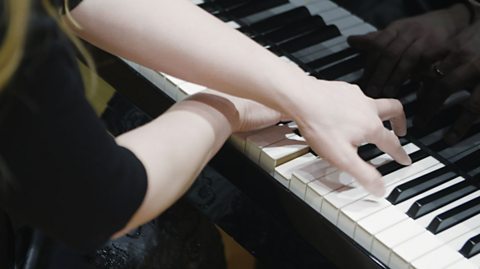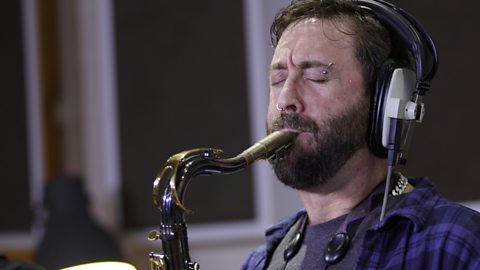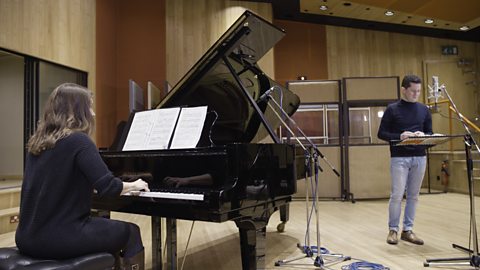What is chamber music?
Chamber music refers to music that was played in someone's home rather than in a church or theatre.
Oliver Heath discusses the string quartet before the Heath Quartet perform "String Quartet No. 12 Opus 127, 2nd Movement" by Ludwig van Beethoven, 1825.
In the Baroque, Classical and Romantic periods, composers were paid to write music that monarchs, aristocrats and the rich could listen to in their own home. The size of room that the music would be played in would not allow for a full orchestra, so chamber music is written for smaller groups.
Some of the more common chamber music combinations are duets (two players), trios (three), quartets (four) and quintets (five).
It is played without a conductor and uses one player per part (in orchestral music there are sometimes several players to a part).
Instruments
Baroque
The trio sonata was very popular during the Baroque period (roughly 1600–1750).
Many Baroque trio sonatas were written for two violins (or recorders, flute or oboe) plus continuo.
The continuo part was played by harpsichord (filling in the harmonies) sometimes with the cello playing the bassline. This involved four players, not three.
Classical
During the Classical period (roughly 1750-1810) the harpsichord largely gave way to the piano.
Many composers wrote sonatas for a solo instrument plus piano. Violin, cello and flute sonatas were all popular. MozartandHaydn both wrote violin sonatas and cello sonatas.
Piano quintets were composed less frequently, but Mozart and Beethoven both wrote piano quintets for piano, oboe, clarinet, horn and bassoon.
The first wind quintets (flute, oboe, clarinet, French horn and bassoon) were written during the Classical period and composers still write for the combination.
Dynamics
The use of harpsichord in the Baroque period limited the dynamic range of the continuo. The harpsichord was plucked and its volume did not depend on the pressure used to play the keys.
The introduction of the piano allowed more dynamic expression.
More on Understanding Music
Find out more by working through a topic
- count6 of 16

- count7 of 16

- count8 of 16

- count9 of 16
